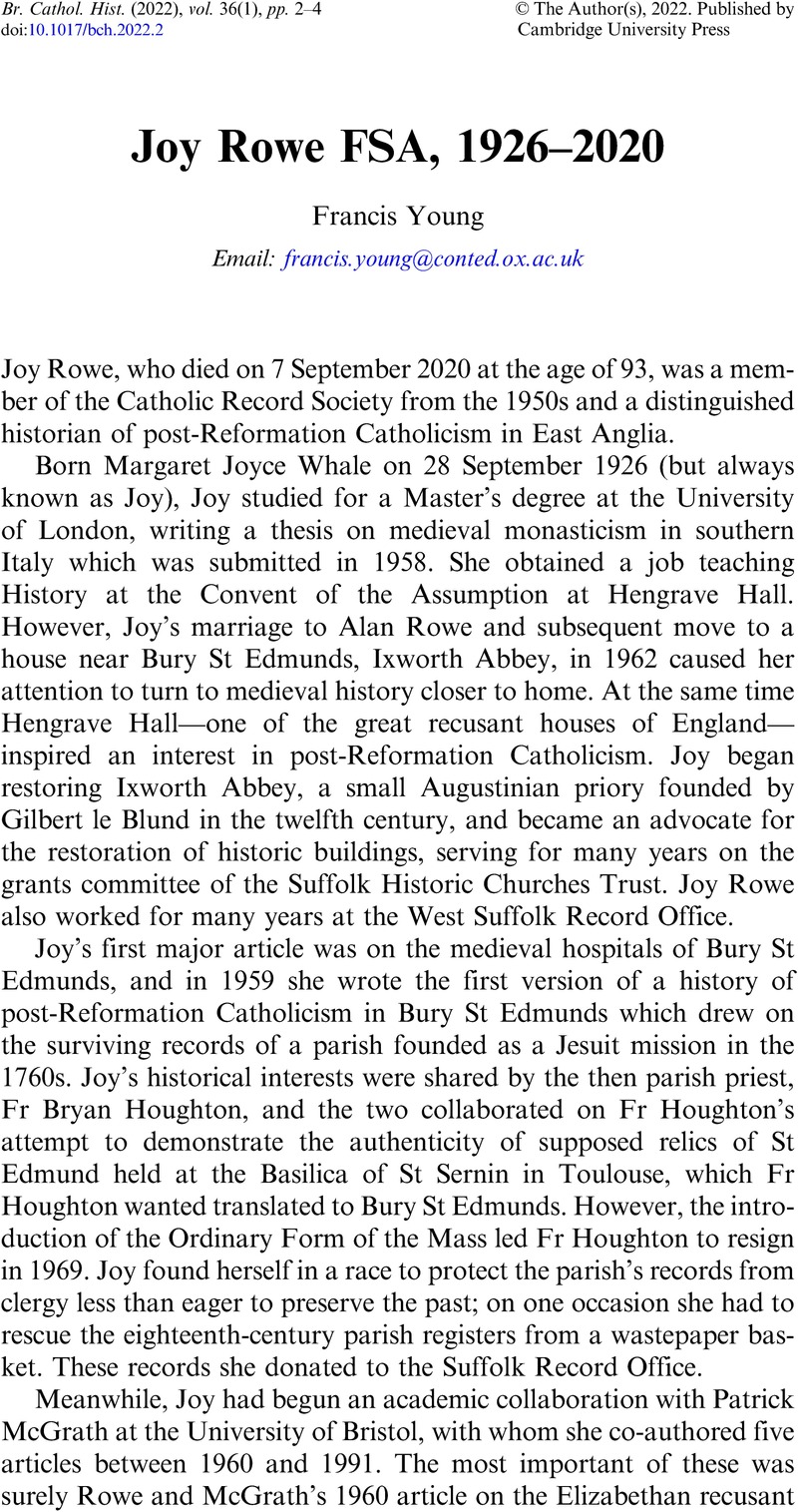No CrossRef data available.
Published online by Cambridge University Press: 08 June 2022

1 J. Rowe, and P. McGrath, ‘The Recusancy of Sir Thomas Cornwallis’, Proceedings of the Suffolk Institute of Archaeology and History 28 (1960): 226–71.
2 J. Rowe and P. McGrath, ‘The Marian Priests under Elizabeth I’, Recusant History 17:2 (1984): 103–20; J. Rowe and P. McGrath, ‘Anstruther analysed: the Elizabethan Seminary Priests’, Recusant History 18:1 (1986): 1–13; J. Rowe and P. McGrath, ‘The Elizabethan Priests: their Harbourers and Helpers’, Recusant History 19:3 (1989): 209–33; J. Rowe and P. McGrath, ‘The Imprisonment of Catholics for Religion under Elizabeth I’, Recusant History 20:4 (1991): 415–35.
3 J. Rowe, ‘The 1767 Census of Papists in the Diocese of Norwich: The Social Composition of the Roman Catholic Community’ in David Chadd (ed.), Religious Dissent in East Anglia III (Norwich: University of East Anglia, 1996), 187–234.
4 J. Rowe, ‘“The Lopped Tree”: The Re-formation of the Suffolk Catholic Community’ in Nicholas Tyacke ed. England’s Long Reformation 1500–1800 (London: UCL Press, 1988), 167–94.